Table of Contents
Introduction to Drone Farming
Drone farming is rapidly transforming the agricultural landscape, offering farmers a revolutionary way to monitor crops, manage resources, and boost productivity.
With technology advancing at a remarkable pace, drones are no longer limited to photography or surveillance; they have become indispensable tools for modern farming.
Drone farming combines precision agriculture, automation, and real-time data collection to help farmers make better decisions about irrigation, fertilization, pest control, and overall crop management.
Over the last decade, countries like India, the United States, and China have increasingly adopted agricultural drones to overcome traditional farming limitations. These drones help in scanning vast fields, identifying crop health issues, and applying fertilizers with high accuracy, saving both time and effort.
The rise in demand has also brought significant attention to the agricultural drone price, which varies based on features, payload capacity, and brand quality.
Understanding drone farming is essential for every modern cultivator aiming to reduce costs and increase yield efficiency. Moreover, learning about the farming drone price helps farmers choose cost-effective models that align with their budget and land requirements.
Whether for small-scale vegetable plots or large-scale cereal cultivation, drones are reshaping how farmers operate and optimize their fields.
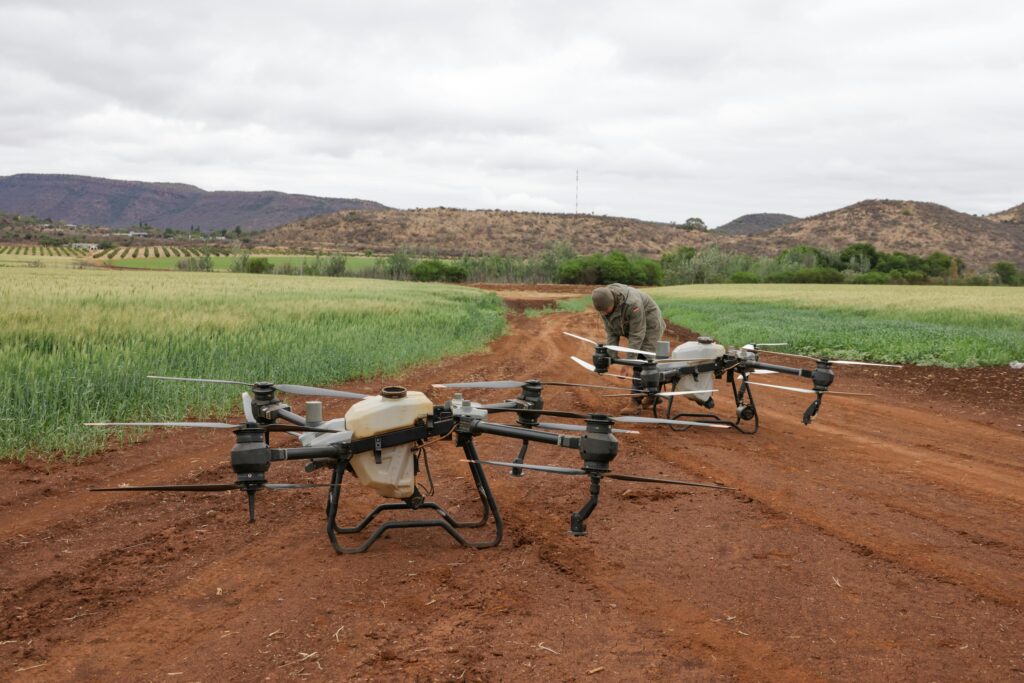
In this article, we’ll explore six powerful and proven insights into drone farming, along with detailed discussions on pricing, benefits, techniques, challenges, and solutions to make your agricultural journey smarter and more sustainable.
1. Understanding Drone Farming and Its Impact on Modern Agriculture
The Evolution of Drone Farming Technology
Drone farming is the backbone of precision agriculture — a system that integrates data, automation, and analytics to make farming more efficient. Earlier, farmers relied on manual field inspections, which were both time-consuming and prone to human error.
However, with drones equipped with advanced sensors and high-definition cameras, even large farms can be monitored within minutes. These devices can capture detailed imagery, identify nutrient deficiencies, detect pest infestations, and assess soil conditions with incredible accuracy.
The global rise of drone farming is also fueled by innovations in artificial intelligence (AI) and GPS technology. AI-based image analysis helps drones interpret field data, while GPS mapping ensures precision in navigation and spraying.
These features not only enhance productivity but also help farmers make data-driven decisions. Additionally, as competition in the market grows, agricultural drone prices have become more affordable, making the technology accessible to small and medium-scale farmers.
Today, farming drone prices depend on factors like flight time, payload capacity, and sensor technology. Entry-level drones may cost less but still provide essential imaging and mapping capabilities, while high-end drones designed for spraying and multi-spectral analysis come at a higher price point.
This evolution signifies that drone farming is no longer a futuristic concept — it’s a practical reality empowering farmers globally.
2. Major Benefits of Drone Farming
Precision and Efficiency in Crop Management
One of the most striking benefits of drone farming is the level of precision it brings to agricultural operations. Traditional crop monitoring often requires walking through fields, which consumes hours of labor and offers limited accuracy.
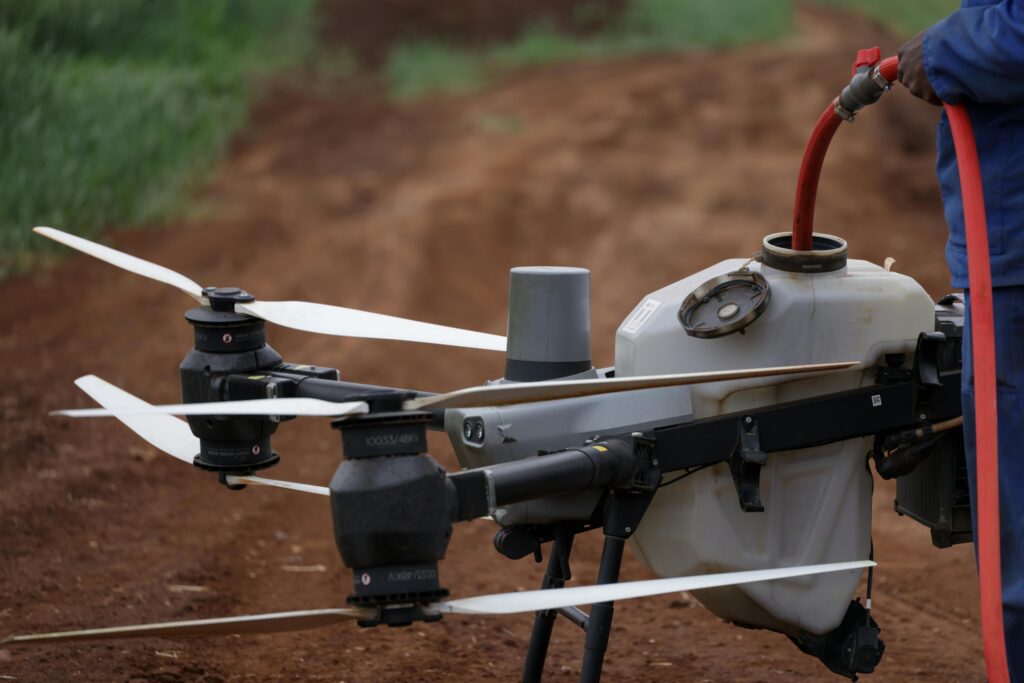
With drones, farmers can now survey hundreds of acres in minutes, collecting critical data about plant health, soil moisture, and pest infestations. This enables them to take immediate corrective measures — improving crop yield and reducing losses.
Drones can also be used for precision spraying, ensuring fertilizers and pesticides are distributed evenly and only where needed. This helps cut down on chemical usage, reducing both environmental impact and production costs.
The integration of drones into daily farming routines means decisions are based on real-time data rather than assumptions. Farmers can schedule irrigation precisely according to moisture levels, identify stressed plants early, and apply treatments with minimal waste.
From an economic standpoint, the agricultural drone price may seem like an initial investment, but its long-term savings outweigh the cost. Farmers who adopt drone farming report up to 20–30% savings in resources and up to 15% higher crop yields.
Furthermore, understanding the farming drone price helps them choose drones that provide maximum value for their specific field size and crop type, making it an intelligent and sustainable investment.
3. Proven Techniques in Drone Farming
Crop Mapping and Soil Analysis
One of the most powerful techniques in drone farming is crop mapping. Using high-resolution cameras and sensors, drones can create detailed 3D maps of farmlands, enabling farmers to analyze soil quality, detect variations, and plan irrigation effectively.
Drones equipped with multispectral sensors can assess chlorophyll levels in plants, identifying nutrient deficiencies before they become visible to the naked eye.
This early detection allows for timely intervention, minimizing yield loss. Additionally, drones can be used to monitor field topography, helping in planning drainage systems and preventing waterlogging. Farmers can integrate this data into software platforms for ongoing analysis and record-keeping.
As a result, crop management becomes not only easier but also more profitable.
When investing in drone technology, farmers often consider the agricultural drone price based on these features. Models offering multispectral imaging or automated route planning may have higher prices but deliver unmatched accuracy.
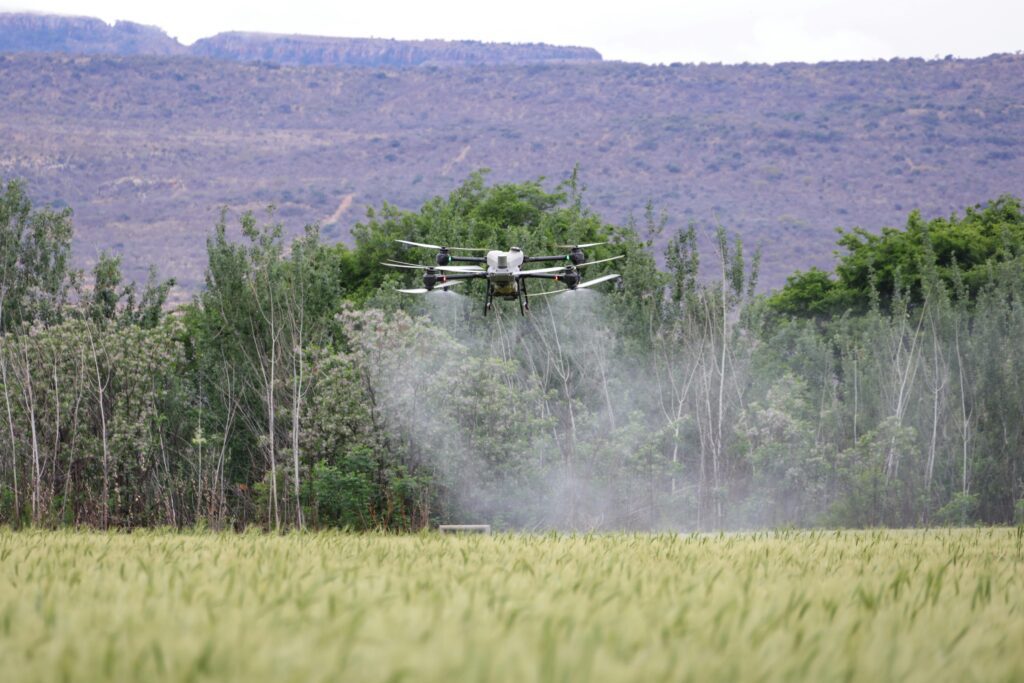
Understanding the farming drone price variations helps farmers balance cost and performance to select the most suitable drone for their needs. Whether it’s rice paddies, vineyards, or wheat fields, drone farming ensures that every square meter of land is managed with precision and efficiency.
4. Challenges in Drone Farming
Cost, Regulation, and Technical Know-How
While drone farming offers enormous potential, it is not without its challenges. The most common concern among farmers is the agricultural drone price.
For small-scale farmers, investing in a drone may initially seem expensive, especially when considering high-end models with advanced features like LiDAR sensors and thermal imaging. However, several government schemes and subsidies are now available in countries like India to make drone adoption easier.
Another challenge is navigating drone regulations. Many countries have strict guidelines governing drone usage in agricultural spaces to ensure safety and privacy. Farmers need to acquire proper training and licenses to operate drones legally.
The lack of technical knowledge is another hurdle; understanding data analytics, drone maintenance, and software integration can seem overwhelming at first.
However, training programs and digital farming platforms are bridging this gap by educating farmers about drone operations. Understanding farming drone prices and the technical aspects before purchasing ensures better investment decisions.
Despite these challenges, the long-term benefits — such as increased yield, reduced labor, and better crop insights — make drone farming a highly rewarding venture for the modern agricultural world.
5. Smart Solutions and Government Support
Making Drone Farming Affordable and Accessible
To make drone farming accessible to all, governments and agricultural organizations are stepping forward with innovative solutions. In India, for instance, the Ministry of Agriculture and Farmers Welfare has introduced subsidy programs covering up to 40–50% of the agricultural drone price.
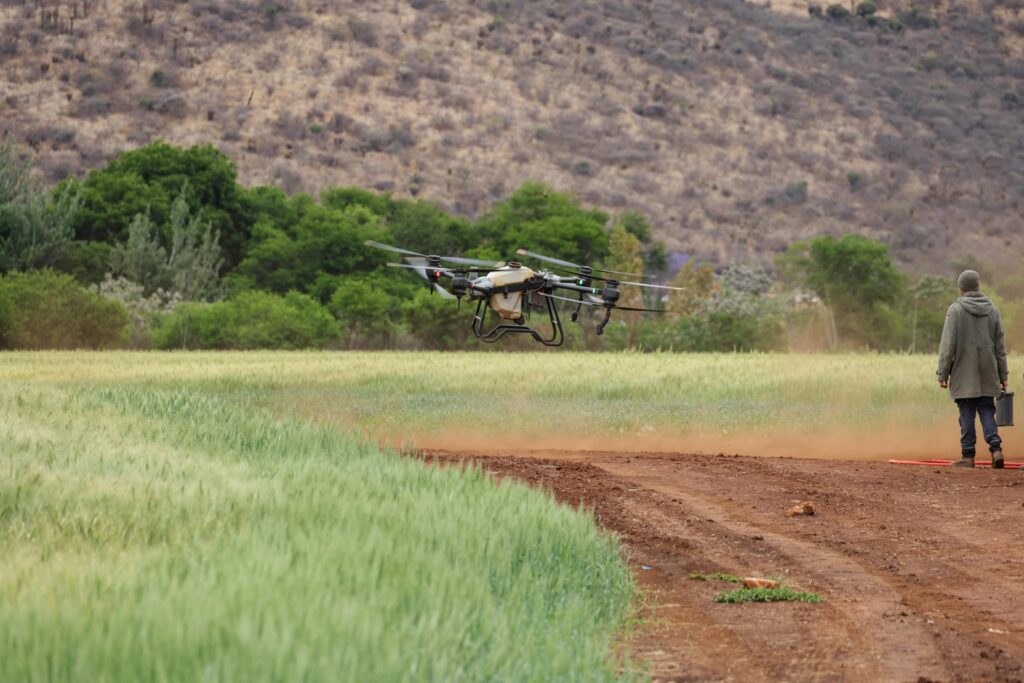
These subsidies encourage small and marginal farmers to embrace this technology without financial strain.
Additionally, various agri-tech startups are offering drone-on-rent services, allowing farmers to use drones on a pay-per-use basis instead of buying one outright. This system significantly reduces the farming drone price burden, enabling even small farmers to benefit from precision agriculture.
Training centers and online certification programs are also being launched to teach farmers how to operate drones, interpret data, and maintain equipment efficiently.
Collaborations between drone manufacturers and agricultural institutions are driving further innovation. Companies are designing budget-friendly drones specifically for Indian farmlands, focusing on durability and ease of use.
These collective efforts ensure that drone farming doesn’t remain a luxury but becomes an essential part of modern agriculture. The ultimate goal is to empower farmers with smart tools that make their work more profitable and sustainable.
6. Real-Life Applications and Case Studies
How Farmers Are Using Drone Farming in the Field
Farmers across the world are witnessing remarkable transformations through drone farming. In states like Punjab and Maharashtra, drone spraying is now common for managing paddy and cotton crops.
Drones cover vast areas within minutes, evenly distributing pesticides and fertilizers — something that once took hours of manual labor.
Similarly, vineyards in California use drones to analyze soil moisture and monitor grape ripening. In Japan, rice farmers rely heavily on drones to maintain uniform irrigation and detect pest issues early. Each of these examples proves that drone technology can adapt to different crop types, climates, and farm sizes.
While the agricultural drone price varies depending on country and brand, its cost-effectiveness becomes evident when you compare it with manual labor expenses and chemical wastage. Farmers investing in these technologies often see a significant return on investment within the first two seasons.
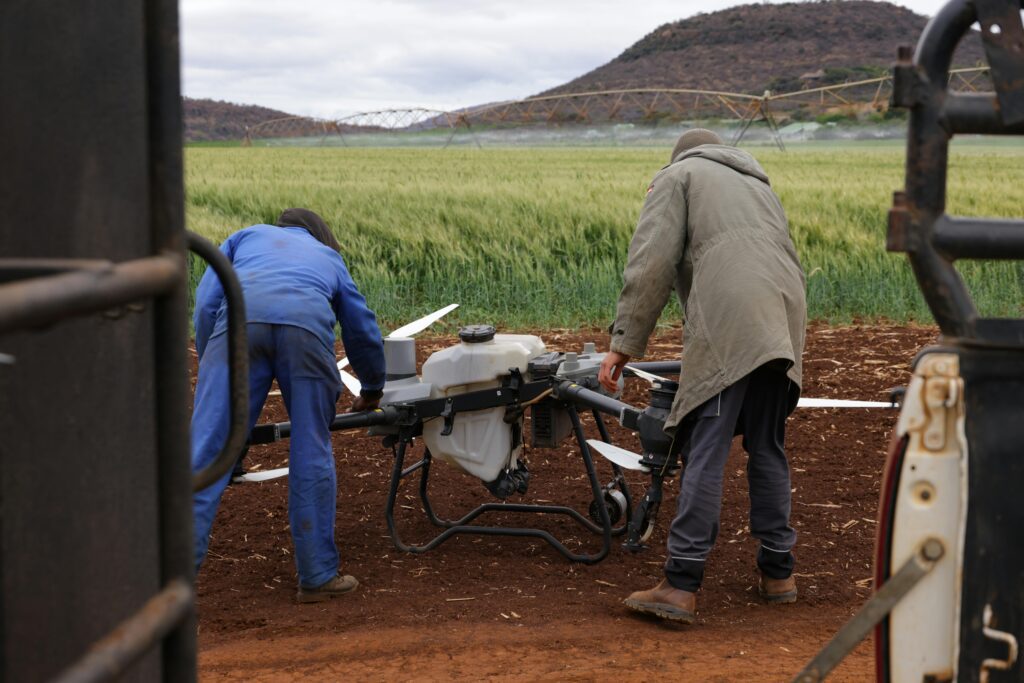
By understanding farming drone price trends and selecting reliable models, they can maximize productivity while ensuring sustainable resource use.
FAQs on Drone Farming, Agricultural Drone Price, and Farming Drone Price
1. What is Drone Farming, and How Does It Work?
Drone farming is the modern face of agriculture that combines technology, data, and automation to enhance farming efficiency and sustainability.
It involves the use of unmanned aerial vehicles (UAVs), commonly called drones, to perform agricultural tasks such as crop monitoring, spraying pesticides, soil analysis, and field mapping.
These drones are equipped with advanced sensors, high-resolution cameras, and GPS systems that allow them to collect precise data from the field in real-time.
When a drone flies over a farm, it captures aerial images and data that help identify plant health, pest infestations, soil moisture levels, and nutrient deficiencies. This information is then analyzed using specialized software to generate actionable insights.
Farmers can use this data to take quick decisions, such as applying fertilizers only where needed, irrigating specific zones, or detecting diseases before they spread.
The power of drone farming lies in its accuracy and efficiency. For example, instead of manually inspecting acres of land, a farmer can now assess the same area in minutes with complete clarity.
Drones also support precision spraying — applying fertilizers, pesticides, and herbicides in uniform and targeted quantities — which minimizes waste and reduces costs.
In short, drone farming represents a revolution where technology helps farmers do more with less. It enhances productivity, promotes sustainable resource use, and brings scientific precision to every step of agricultural management.
2. What Is the Average Agricultural Drone Price in India?
The agricultural drone price in India varies widely depending on the drone’s build quality, functionality, and technical specifications.
On average, entry-level agricultural drones start from around ₹80,000 to ₹1.5 lakh, while mid-range models used for spraying or monitoring can cost between ₹3 lakh and ₹6 lakh. Premium, high-end drones with features like multispectral sensors, AI-based analytics, and extended flight duration can cost up to ₹10 lakh or more.
The variation in agricultural drone price primarily depends on the drone’s purpose. For example, a basic drone used for crop imaging or mapping may not need a heavy payload capacity or chemical tanks, making it relatively affordable.
However, drones used for spraying pesticides or fertilizers require larger tanks, better propulsion systems, and safety mechanisms, thus increasing the cost.
Another influencing factor is whether the drone comes with real-time data processing and automation features. Drones that can generate NDVI (Normalized Difference Vegetation Index) maps or interpret data automatically tend to be more expensive.
In addition, brand reputation, service support, and warranty options also contribute to the final farming drone price.
Despite the initial cost, the long-term financial benefits of drone farming outweigh the investment. Farmers save on labor, fuel, and chemical usage, while improving crop yield and quality.
Furthermore, government subsidies and drone-on-rent programs in India are making agricultural drones more affordable, helping farmers embrace modern, data-driven farming without financial strain.
3. Is Drone Farming Suitable for Small Farmers?
Yes, drone farming is not only suitable but increasingly beneficial for small and marginal farmers. Initially, drones were viewed as expensive technologies reserved for large commercial farms, but this perception has changed rapidly due to technological advancements and government support.
Today, small farmers can access drones through rental services or cooperative ownership models, where several farmers share a single drone to reduce costs.
The government of India and several state agricultural departments have introduced subsidy programs covering up to 50% of the agricultural drone price, making it feasible even for small-scale farmers to adopt this technology.
In addition, many agri-tech startups now offer “drone-as-a-service” models, where farmers pay per acre for drone operations rather than buying one outright. This allows them to enjoy all the benefits of drone farming without worrying about maintenance or high upfront costs.
For small farmers, drones bring incredible advantages. They help in accurate field monitoring, early disease detection, and precision spraying — all of which contribute to reducing waste and improving yield. The farming drone price may still seem high initially, but the return on investment is significant when measured in terms of efficiency, crop health, and productivity.
In rural communities, local entrepreneurs are also being trained to provide drone services to smallholders. This ecosystem ensures that even farmers with limited resources can benefit from the precision and insights offered by drone farming. Therefore, drone technology is not just a luxury but an accessible tool that empowers every farmer to work smarter and achieve sustainable agricultural growth.
4. How Do Drones Improve Crop Yields?
Drones significantly improve crop yields by offering real-time, accurate, and data-driven insights into farm conditions. Traditionally, farmers relied on visual observation and experience to determine crop health and field requirements, which often led to guesswork and inefficiencies.
With drone farming, this process becomes more scientific and measurable.
Drones use high-resolution cameras and multispectral sensors to monitor plant health by analyzing the light reflected from crops. This helps detect problems such as nutrient deficiencies, pest attacks, and diseases long before they are visible to the human eye.
Early detection allows farmers to intervene promptly — applying fertilizers or pesticides exactly where needed — thereby preventing further damage and ensuring uniform crop growth.
In irrigation management, drones help identify dry or waterlogged patches, enabling farmers to optimize water usage. This not only conserves resources but also maintains ideal growing conditions for plants. Additionally, drones can create precise field maps, showing yield variations across the farm.
These maps help farmers make informed decisions for future sowing patterns and crop rotation.
From a financial perspective, while the agricultural drone price may require an initial investment, the improvement in crop yield and reduction in resource wastage result in faster returns.
Furthermore, the accurate spraying capacity of drones reduces overuse of chemicals, lowering operational costs and minimizing environmental impact.
Ultimately, drone farming boosts productivity by ensuring that every square meter of farmland receives the right care at the right time. Farmers no longer need to rely on assumptions — they can act based on data, precision, and scientific accuracy, leading to higher yields and better profitability.
5. What Factors Affect Farming Drone Price?
The farming drone price depends on a range of technical and practical factors that determine its performance, durability, and features. One of the main factors is payload capacity — the amount of weight a drone can carry, such as liquid pesticides, fertilizers, or cameras.
Drones with larger payloads are generally more expensive since they require stronger motors, longer flight times, and stable propulsion systems.
Another crucial factor is flight duration and range. Entry-level drones can fly for 20–30 minutes on a single charge, while professional agricultural drones can last over an hour.
Extended flight times are essential for large farms and hence add to the overall cost. Similarly, the presence of multispectral or thermal sensors used for advanced imaging also increases the agricultural drone price, as these sensors enable precise vegetation health analysis.
Automation and AI capabilities are also major price influencers. Drones that can automatically follow GPS-defined routes, adjust spraying intensity, and analyze crop health in real-time are naturally more expensive.
Additionally, durability and weather resistance play key roles — drones designed to withstand heat, dust, and wind tend to cost more but provide better reliability in field conditions.
Brand reputation and after-sales support further impact the farming drone price. Reliable brands often include software integration tools, training modules, and maintenance services in their packages.
However, with government subsidies and the growing competition among drone manufacturers, prices are becoming more reasonable.
Ultimately, when choosing a drone, farmers should balance cost with functionality. The best value comes from drones that meet their specific farming requirements — not necessarily the most expensive models.
By understanding these factors, farmers can make well-informed purchases that offer long-term benefits and excellent returns on investment.
Conclusion
Drone farming is no longer a futuristic dream — it’s the new backbone of precision agriculture. By integrating advanced technologies, drones have made it easier for farmers to manage large fields, monitor crop health, and increase yield with minimal resources.
While the agricultural drone price can vary, the investment brings long-term benefits, including reduced labor costs, efficient resource use, and improved profitability.
With growing support from governments, startups, and training institutions, drone farming is set to become an essential component of sustainable agriculture.
Farmers who understand farming drone prices and choose the right models for their needs can reap immense benefits in both productivity and profitability.
In conclusion, embracing drone farming means embracing the future of agriculture — one where innovation meets sustainability, and every farmer becomes a tech-savvy guardian of their land.
The time to adopt this powerful technology is now — because the fields of tomorrow will be managed not by guesswork, but by the precision and intelligence of drones.
